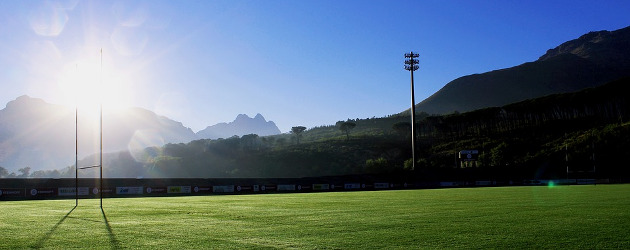Rugby Union and Rugby League
Ask an American about the game of rugby and chances are that he’ll look at you in puzzlement. Yet for hundreds of millions of rugby fans around the world, the game is one of the most exciting and thrilling sporting events imaginable. Some fans watch on TV while others attend as many games as they can. There’s even rugby sportsbook bets at Vegas online sportsbooks.
Why are there multiple types of rugby and what are they? Will the public clamor for the two rugby divisions to merge into one?
Introducing the World of Rugby
Rugby is an intensely popular game in many areas of the world including throughout the UK and other former British Commonwealth nations such as New Zealand, South Africa, Australia and India. It’s also a big sporting event for Argentinians, French, Irish, Scottish and Italians.
Most historians believe that rugby started when William Webb Ellis, a schoolboy, developed the game in 1823 at the Rugby school in Rugby England. Rugby is known for its “fine disregard for the rules of football” and includes elements of European football as well as many distinctive features.
Over time two types of rugby evolved – rugby union and rugby league. There are similarities between these two types of rugby but there are also differences in the sets of rules of the game.
Basic Rules
In the game of rugby, the goal is, like football, to get the ball into the goal. When you play rugby you can run with the ball, kick it and pass it sideways or backwards but passing forward is not allowed.
In the early days there were no formal playing positions and the number of players in a game of rugby was not limited. In the early days, whichever number of boys entered the field determined how big the game would be. Once the game began to be played between different clubs and schools, rules were needed to fix the number of players. Players began to specialize in certain positions where they developed the particular skills that were needed for those positions.
In the end, rugby teams were determined to be made up of twenty players — seventeen forwards and three full backs. Over the years that has changed and been modified for the two types of rugby. Today rugby union is comprised of a maximum of 15 players while rugby league rules permit 13 players. Both variations divide the players into “backs” and “forwards”.
Similarities
Both rugby union and rugby league have the same basic rules:
- The ball size and shape is the same.
- A goal is scored when the ball is kicked between the two posts and over the cross bar.
- Open play goals and penalty goals count as points.
- The goal is to score the most number of points through conversions, tries, penalty goals and drop goals.
- Play time is 80 minutes.
- A try is declared when the ball is touched down on or beyond the other team’s goal line.
- Players can pass the ball hand to hand sideways or in a backward direction.
- The ball can be kicked forward but it can’t be passed forward by hand.
- When one side scores a try they have a chance to scores two additional points by kicking a “conversion”.
- The ball can move by kicking, being propelled by a runner or as the result of a set-piece.
- A “scrum” occurs is the ball is dropped in a forwards direction. That restarts the game (in a league game, the sixth tackle creates an exception to this rule and the game restarts with a handover to the opposing team).
- A player holding the ball may be tackled but team members may not tackle a player who is not in possession of the ball. When a tackle occurs the play restarts and ball is transferred to another player.
Code Differences
There are many differences between the codes in the two types of play which make observers wonder whether unification of the two rugby types can be effected. Some of the differences include:
- Possession can be contested more often in rugby union games than in rugby league games. These include:
- Contesting the ball after a tackle.
- Contesting the ball on the grounds in rucks.
- Contesting the ball through mauls.
- In rugby union, the attacking team can use and hold the ball for as long as they are able. In rugby league, possession of the ball isn’t handed over until both teams are tackled six times.
- In rugby union the action stops after each successive tackle while in rugby league the ball is contested after a tackle.
- In rugby union possession can be contested at scrums and at line-outs. There are no line-outs in league rugby.
- In rugby league possession may change
- If the ball goes out of play and the opposition is awarded a scrum from a kick that went into touch on the full. This ball back facilitates the forming of a scrum for possession change.
- When a one-on-one tackle is attempted, if the attacking player hasn’t fallen to the ground (for a completed tackle) of if the ref hasn’t called “held” the tackler can take the ball from the attacking player.
In rugby union, possession may change:
- If the ball goes out of play, resulting in a line-out. If they have not been awarded a penalty before the kick, they take possession
- When a scrum, line out, ruck, tackle or maul occurs, the attacking team may lose possession in a scrum, line out, maul, ruck or tackle.
Additional differences include variations between the two types of rugby in tackling, scoring, laws and pitch.
Will the Two Rugbys Reunite?
The question of a possible merger between the two rugby variations has always been a compelling one but it has become even more urgent in recent years since rugby union went professional in 1995. Now, many observers and fans argue, the barriers have been lowered and the stakes are higher. Rugby union aficionados seem skeptical based on some of league’s practices that they refuse to forgo.
Rugby union is more popular but there are differing visions of what happens at the tackle that make rugby league enthusiasts unlikely to give up their vision of the game.
One of the most compelling arguments against a merger is the fact that rugby league is a much simpler game than rugby union, making it difficult to integrate league players into union play. There are “top level” players in both codes but different kinds of players are needed for many of the rugby union positions since rugby league has uncontested scrums and no line-outs.
In short, merger seems unlikely in the coming years giving rugby fans more games to enjoy.










